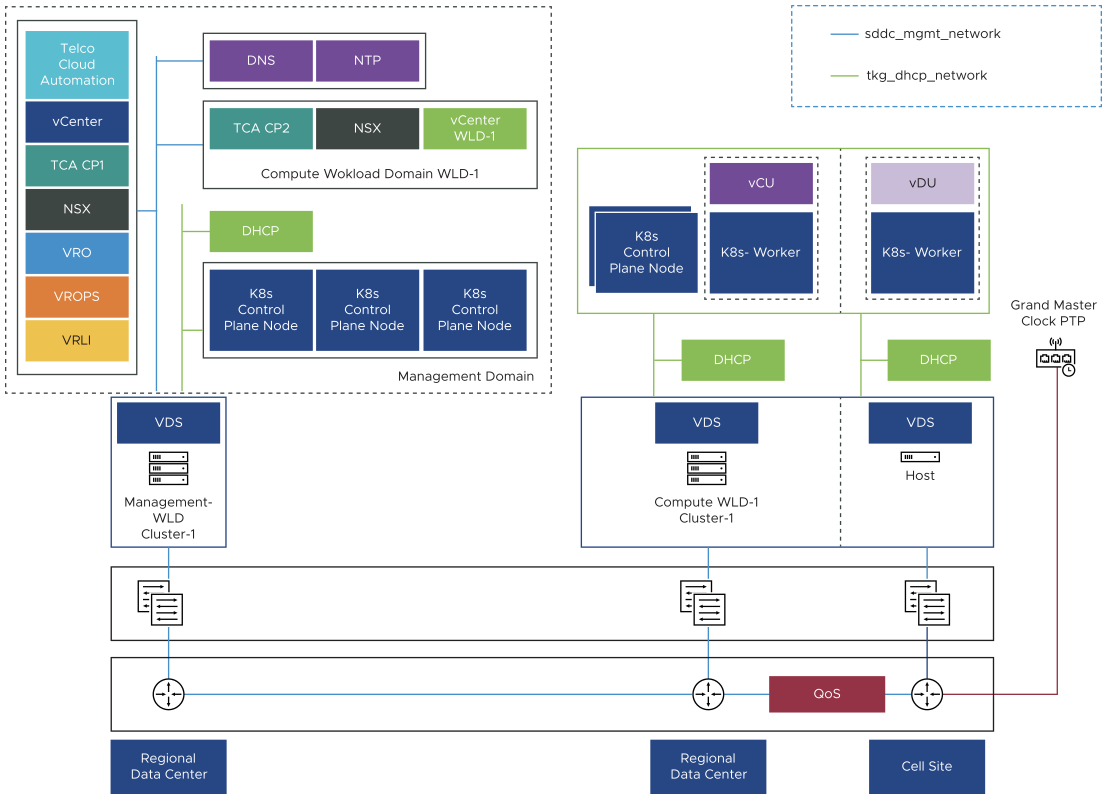This section describes the Tanzu Basic for RAN deployment architecture and the placement of its components in the Telco Cloud Platform RAN design.
Tanzu Kubernetes Management Cluster is a Kubernetes cluster that functions as the primary management and operational center for the Tanzu Basic for RAN instance. In this management cluster, the Cluster API runs to create Tanzu Kubernetes clusters and you configure the shared and in-cluster services that the clusters use.
Tanzu Kubernetes Workload Cluster is a Kubernetes cluster that is deployed from the Tanzu Kubernetes management cluster. Tanzu Kubernetes clusters can run different versions of Kubernetes, depending on the CNF workload requirements. Tanzu Kubernetes clusters support multiple types of CNIs for Pod-to-Pod networking, with Antrea as the default CNI and the vSphere CSI provider for storage by default. When deployed through Telco Cloud Automation, VMware NodeConfig Operator is bundled into every workload cluster to handle the node Operating System (OS) configuration, performance tuning, and OS upgrades required for various types of Telco CNF workloads for RAN.

In this design, Kubernetes control plane nodes are deployed at Regional Data Center (RDC) and Kubernetes worker node is deployed at the Cell Site host.
Telco Cloud Automation onboards the Cell Site host and orchestrates the deployment of Tanzu Kubernetes clusters.
A dedicated DHCP server is available locally at RDC and Cell Site to support the DHCP service offering for Kubernetes clusters.
Kubernetes Worker nodes are deployed at Regional Data Center and are extended to Cell Site locations to support the telco CNF workloads such as vCU and vDU in a geographically distributed way.